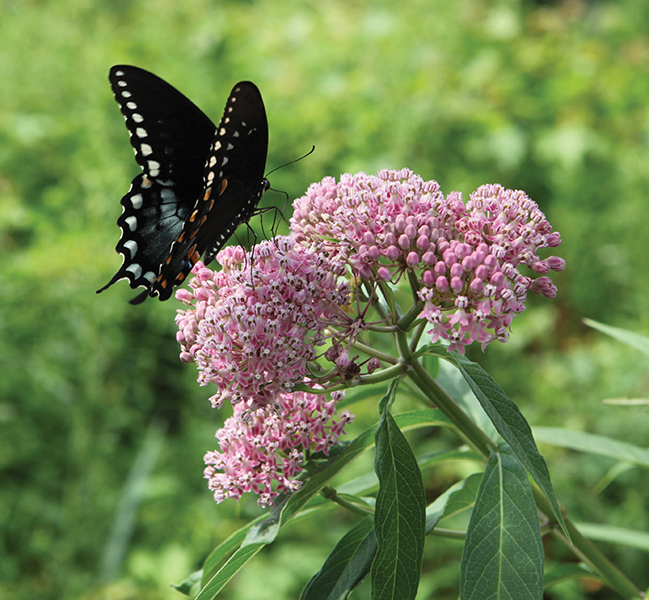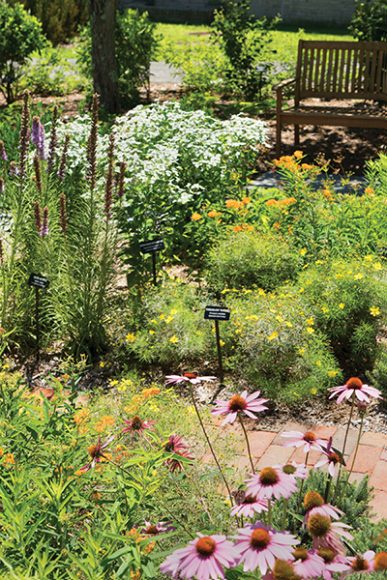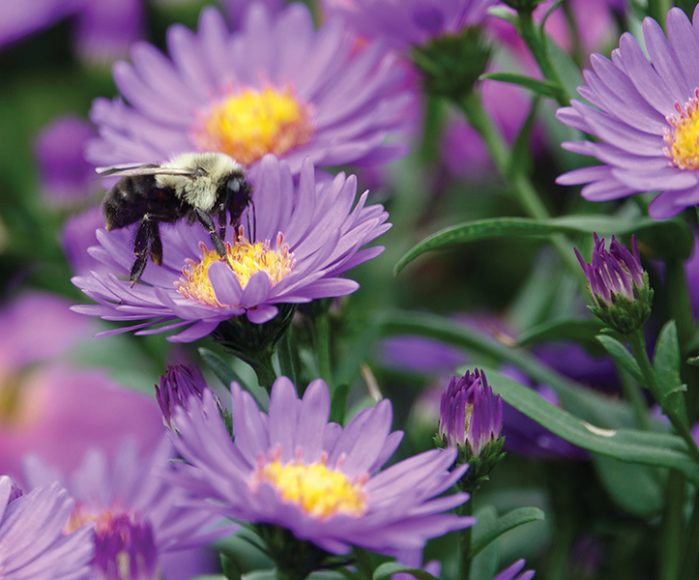From black-eyed Susans to coneflowers, azalea bushes to dogwood trees, the trend in planting gardens today is to go local with native plants.
If you’re looking to establish or expand your garden with regional plants that will attract the area’s birds and insects — so important to our natural environment — then the place to turn to is The Native Plant Center at Westchester Community College (WCC) in Valhalla.
Now celebrating its 20th anniversary, The Native Plant Center’s goal is to “educate people about the environmental necessity, economic value and natural beauty of native plants of the Northeast,” says Peekskill resident Carol Capobianco, the center’s director.

Using her communications background in journalism — as well as her work at the New York Botanical Garden and Audubon at Home, among other organizations, and her love of plants and birds — Capobianco has made it her mission to spread the word around the county about The Native Plant Center and to make sure the organization is strong financially and continues to grow in terms of volunteers, members and programs.
“And, of course, the center is located on a community college campus, so we are all about education, education, education,” Capobianco says. “We consider every person we reach as a student, not only those matriculated here, but the gamut of ecological gardeners, landscape architects, arborists and municipal workers — all types of people who are interested in making the environment more ‘habitat-able’ for wildlife.”
The Native Plant Center was founded in 1998 as the first affiliate of the Lady Bird Johnson Wildflower Center in Texas. In tribute to the former first lady, the Center’s Lady Bird Johnson Demonstration Garden was dedicated in 1999 with a ceremony attended by Johnson and her daughters, Lynda and Luci.
“Lady Bird Johnson said she liked it when she would travel around America and it would ‘speak its own language in its own regional accent,’” Capobianco says. “When we travel the country, a lot of times we find out how we know a place is through its flora. We see palm trees at the beach, cactus plants in the desert and conifers in the Colorado Rockies.”
Plants in the recently restored and expanded meadow of the Lady Bird Johnson Demonstration Garden show visitors what can grow naturally in our Northeast region, from Jacob’s ladder with its colorful purple blossoms to deep pink azalea flowers and golden Alexander with its tiny clusters of yellow blooms.
Capobianco says they are still doing extensive work on the garden, including removing invasive species and expanding a demonstration area with shrubs and trees beneficial to birds. “Plus, right now we are experimenting with different ground cover that we call ‘green mulch,’ which we use instead of putting down wood chips to suppress the weeds,” she says. “We’re trying plants such as ferns, groundsel, woodland phlox and wild strawberries and want to see what will spread the easiest so we can share the information with the public.”
In addition, the center has created a beautiful New American Cottage Garden, which teaches visitors how to incorporate native plants into a cohesive home setting. The garden is highlighted by such elements as a formal perennial bed, shrub borders and a water feature. Colorful flowers to see in May include goatsbeard, with its creamy white plumes; Eastern bluestar with clusters of powder blue blossoms; and purple wild geraniums. Popping up in the water garden are marsh marigolds with lush low yellow flowers.
When asked why native plants are so important, Capobianco says they are the “Swiss army knife” of the plant world because they are so versatile. “Not only do they provide wildlife habitat and sustain biodiversity, but they also protect water quality and require less maintenance,” she says. “Plus, they’re beautiful and give the area a regional identity.”
A good example is milkweed, which Capobianco calls the “poster child for native plants.” While the Monarch butterfly may eat nectar from many different flowers, their caterpillars can only eat milkweed in order to survive. She says, “Nonnative plants may look nice, but just like a bowl of fruit, if you can’t eat it, then it’s no good.”
Many of the species of flowers, shrubs and trees on view in the center’s gardens are for sale during the annual Native Plant Sale, which took place at the end of April. According to Capobianco, “the number of plants sold has spiked from 6,000 several years ago to 11,000, and plans are to keep increasing sales.”
She adds: “The plant sale brings out our center’s three key elements of education, demonstration and conservation into the community. First, we have expert volunteers who know the native plants the best and can educate our customers; then we have the demonstration opportunities, because you can see the plants right in front of you with signs bearing identification and detailed information; and, finally, conservation, because we’re getting these plants into the community to create new wildlife habitats.”
While the plant sale is over for this year, there are many upcoming events that the public can take advantage of in the near future. Among them is the dedication of the Cottage Garden, set for June 3 at 3 p.m. (no admission fee). The ribbon cutting will be followed by a light reception and a chance to wander through the setting of more than 800 plants representing 60 species and cultivars. The garden is located behind WCC’s Stone Cottage, which is the headquarters for the Native Plant Center.
Looking ahead, the center will host guided tours of its gardens July 29 and will partner with Rosedale Nurseries for a “Native Plant Center Benefit Weekend” on Sept. 8 and 9. That weekend will feature personal shoppers on hand to help you make your selections at Rosedale as well as a series of lectures by native plant experts. Talks include “Workhorse Native Plants for Attracting Wildlife,” at 2 p.m. Sept. 8; and “Native Perennials to Plant Now,” at 11 a.m. Sept. 9.
In addition to programming, the center also has an annual landscape conference; field trips to other native plant gardens; and Go Native U, which features a certificate program and continuing education classes that help students make their gardens healthier and more beautiful.
“Whether you are a home gardener or a landscape professional, we’re hoping we will be the place you turn to when you’re looking for information and inspiration about the benefits of native plants,” Capobianco says. “We really want the public to know about the importance of these plants in creating a healthy ecosystem.”
For more, visit nativeplantcenter.org.





